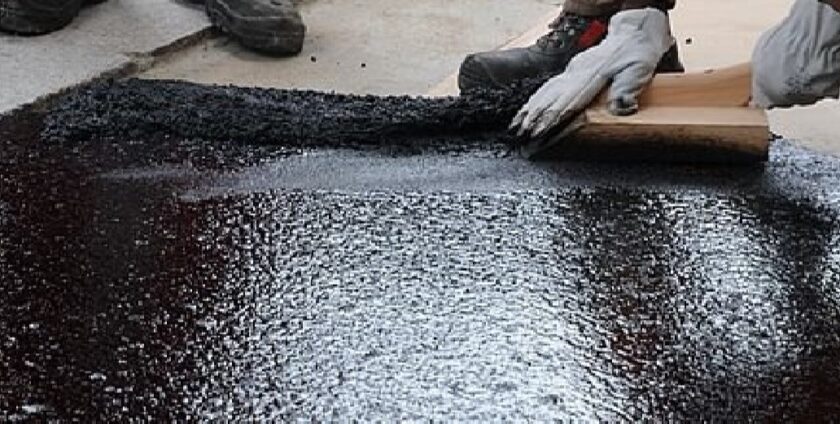
Oxidized Bitumen for Waterproofing
Oxidized bitumen, a specialized form of bitumen, undergoes a controlled oxidation process to enhance its properties, making it a versatile material for waterproofing applications. In this comprehensive guide, we delve into the intricate manufacturing process, unique characteristics, diverse applications, and sourcing insights from Peak Universal Business, a trusted supplier in the industry.
Understanding Oxidized Bitumen
Oxidized bitumen, also known as blown bitumen or air-blown bitumen, undergoes a controlled oxidation process to modify its physical and chemical properties. This process involves the introduction of air into hot bitumen under controlled conditions, resulting in the formation of oxygenated compounds and cross-linkages within the bitumen molecules. The oxidation process alters the molecular structure of bitumen, leading to an increase in viscosity, softening point, and resistance to temperature fluctuations. The resulting oxidized bitumen exhibits enhanced durability, flexibility, and waterproofing characteristics, making it suitable for various construction applications.
💧 Why Use Oxidized Bitumen in Waterproofing?
Oxidized bitumen forms a continuous, impermeable layer when applied, preventing water ingress and protecting structures from moisture-related damage. It is extensively used in:
-
Roofing systems
-
Basement and foundation sealing
-
Damp-proof course membranes
-
Bridge decks and tunnels
-
Waterproof expansion joints
🧪 Key Properties That Make It Ideal
| Property | Value/Effect |
|---|---|
| Softening Point | 85–115°C – Resists deformation in heat |
| Penetration Value | 5–25 dmm – Indicates hardness and durability |
| Water Absorption | <1% – Excellent moisture resistance |
| Adhesion to Surfaces | Strong – Bonds well to concrete, metal, wood |
| Flexibility (at service temp) | Good – Can withstand minor structural movement |
Manufacturing Process of Oxidized Bitumen
The manufacturing process of oxidized bitumen involves several sequential steps:
Selection of Bitumen:
The process begins with the selection of suitable grades of bitumen, typically sourced from petroleum refineries or asphalt processing plants. The chosen bitumen must meet specific quality criteria and viscosity grades to ensure optimal performance in the oxidation process.
Heating and Preparation:
The selected bitumen is heated to a predetermined temperature to achieve fluidity and facilitate the oxidation process. Heating also helps reduce the viscosity of the bitumen, allowing for better air penetration and oxidation.
Oxidation:
Air is blown through the heated bitumen under controlled conditions, typically at temperatures ranging from 220°C to 260°C. The introduction of oxygen into the bitumen molecules leads to the formation of oxygenated compounds, such as ketones, aldehydes, and carboxylic acids. These compounds contribute to the cross-linking of bitumen molecules, resulting in increased molecular weight, viscosity, and softening point.
Cooling and Packaging:
Once the desired degree of oxidation is achieved, the oxidized bitumen is allowed to cool to room temperature before being packaged into containers or drums for storage and transportation. Proper packaging is essential to maintain the integrity and stability of the oxidized bitumen during handling and storage.
🔁 Characteristics of Oxidized Bitumen
Oxidized bitumen exhibits several unique characteristics that distinguish it from conventional bitumen:
High Softening Point:
Oxidized bitumen typically has a higher softening point compared to conventional bitumen, ranging from 85°C to 110°C. This elevated softening point ensures improved resistance to deformation and flow at high temperatures, making it suitable for use in hot climates and high-temperature applications.
Increased Viscosity:
The oxidation process increases the viscosity of bitumen, resulting in a thicker consistency and improved adhesion properties. The higher viscosity of oxidized bitumen enhances its ability to fill cracks, voids, and irregularities in surfaces, providing effective waterproofing and sealing.
Enhanced Durability:
Oxidized bitumen exhibits enhanced durability and weather resistance, making it highly resistant to water, moisture, UV radiation, and chemical degradation. These properties ensure long-lasting performance and protection in various outdoor and exposed applications.
Improved Flexibility:
The cross-linking of bitumen molecules during the oxidation process imparts increased flexibility and elasticity to oxidized bitumen. This enhanced flexibility allows the material to accommodate substrate movement, thermal expansion, and contraction without cracking or delamination, ensuring reliable waterproofing and sealing over time.
🛠️ Applications of Oxidized Bitumen in Waterproofing
Oxidized bitumen finds diverse applications in Waterproofing and sealing:
🏠 Roofing Systems:
Oxidized bitumen is commonly used in built-up roofing (BUR) systems, modified bitumen membranes, and roofing shingles to provide durable and weather-resistant waterproofing. It is applied as a roofing adhesive, waterproofing membrane, or protective coating to create a watertight barrier and prevent water infiltration into buildings.
🧪 Below-Grade Waterproofing:
In below-grade applications such as foundation walls, basements, and tunnels, oxidized bitumen is used as a waterproofing membrane or coating to protect concrete structures from groundwater infiltration and moisture damage. It forms a durable and flexible barrier that prevents water seepage and ensures structural integrity.
🧱 Pavement Maintenance:
Oxidized bitumen is utilized in pavement maintenance and rehabilitation projects to repair and seal cracks, joints, and asphalt surfaces. It is applied as a crack sealant, joint filler, or surface treatment to prevent water intrusion, oxidation, and deterioration of asphalt pavements.
🌉 Bridge Decks and Parking Structures:
In infrastructure projects, oxidized bitumen is used to waterproof bridge decks, parking decks, and other elevated structures to protect the underlying concrete from water-induced deterioration, corrosion, and spalling. It forms a seamless and waterproof membrane that extends the service life of the structure.
Sourcing Oxidized Bitumen from Peak Universal Business
As a leading supplier of oxidized bitumen, Peak Universal Business offers a wide range of high-quality products tailored to meet the specific needs and requirements of customers. With a commitment to quality, reliability, and customer satisfaction, Peak Universal Business provides comprehensive solutions and technical support to ensure the success of waterproofing projects.
FAQs about Oxidized Bitumen Waterproofing
❓ Can oxidized bitumen be used in wet environments?
Yes, it is designed specifically for wet, humid, and submerged conditions. However, proper application methods are crucial for long-term performance.
❓ How is it applied?
It can be hot-melted and brushed on, torch-applied in membrane sheets, or used in roll-on liquid emulsions.
❓ Is oxidized bitumen UV-resistant?
Yes, grades like 90/10 and 115/15 have high UV stability, making them suitable for exposed surfaces.
❓ How long does it last in waterproofing?
Properly applied, oxidized bitumen systems can last 15–25 years, depending on exposure and maintenance.
🔚 Conclusion
Oxidized bitumen stands as a versatile and effective material in waterproofing applications, offering enhanced durability, flexibility, and weather resistance. With insights into its manufacturing process, unique characteristics, diverse applications, and sourcing options from Peak Universal Business, customers can access high-quality oxidized bitumen products to meet their waterproofing needs effectively and efficiently.
📣Call to Peak Universal Business
🔍 Looking for premium-quality oxidized bitumen for waterproofing applications?
We in Peak Universal Business, certified oxidized bitumen grades like 85/25, 90/10, and 115/15 — perfect for waterproofing membranes, sealants, and protective layers.
📞 Contact us now for a custom quote or technical support.
👉 Request a Quote Today
📧 Email: [email protected]
📞 Phone: +971 4 878 2031
🌐 Visit: PUBLtd.Asphalts
📦 Minimum Order: 20 MT | Packaging: Kraft Bags / Drums / Bulk
If You have any other Query or Question you want to ask, Please don’t hesitate to Contact Us.
- 0 comment
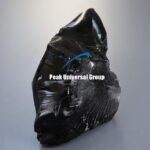
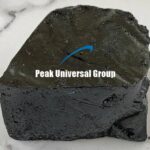
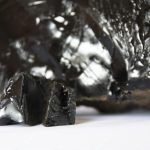

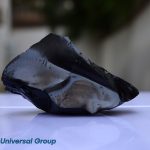
Leave a Reply